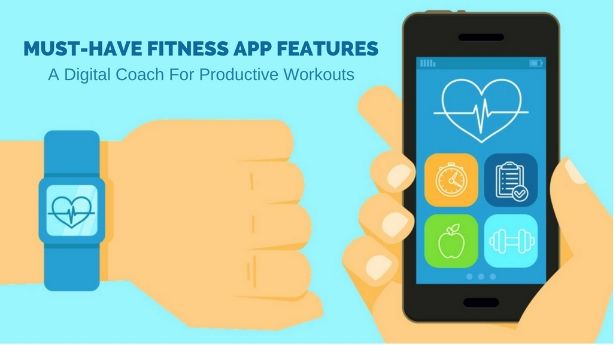A Quick Payment Gateway Selection Guide For Your Online Business

- Does the Payment Gateway Integrate with your eCommerce platform?
- A majority of payment gateway providers offer easy or one-click integration. But before deciding on one, you must ensure that the payment gateway supports your current version of the eCommerce platform. Some payment gateways do not have existing plugins or extensions for your platform. This involves a lot of custom development work including an enormous amount of time and resources. The best thing you can do is to have an experienced eCommerce development company to develop your store using an open-source platform that offers wide-ranging extensions or plugins. This extensions/plugins can integrate your store with popular payment gateways quickly and easily.
- Does the Payment Gateway offer methods your target customers use?
- From the massively popular Mastercard and Visa to other niche payment methods like Bitcoin, there are several online payment methods that are in use around the world. But each payment gateway does not support all the payment methods out there. Therefore, you need to identify the payment methods your target customers are using and choose the payment gateway that supports those methods. For instance, if you select Stripe as the payment gateway and your target customers transact a lot using PayPal, then it's a bad choice as Stripe doesn't accept PayPal payments.
- Does the Payment Gateway promise to grow with your business?
- A growing business requires a payment gateway to be able to keep up with it. If the user engagement of your business increases, the payment gateway must offer or launch products that enable customers to make faster payments. Stripe which is a popular payment gateway recently launched a feature for Twitter users that allows them to complete their purchase directly from a tweet without having to leave the website. By using such innovative features and platforms, you can reach out to more customers while ensuring the growth and success of your business.
- Does the Payment Gateway promise to improve your checkout UX (user experience)?
- A payment gateway if correctly chosen can improve your checkout process by reducing the number of steps involved and speeding up the process. If you choose to integrate the globally acclaimed service PayPal Express, you can auto-populate the information of your customers through its API and turn it into a one-click checkout. However, since checkout is the overall transaction success determinant, you must ensure that it is both seamless and easy. Customers usually return to stores that offer a fast and painless checkout process which ultimately results in enhancing your customer retention ratio.
Posted on November 16th, 2016
5 Tips To Ensure Robust Security Of Your Mobile App

- Encrypt your Source Code:
- Understand Platform Specific Limitations:
- Make Provisions for Data Security:
- Secure the Backend:
- Perform In-depth QA & Security Check:
Posted on November 9th, 2016
3 Features A Great Fitness App Must Have

- Create an account:
- Connect app with external devices:
- Integrate Geolocation:
Posted on September 19th, 2016
3 Effective Ways To Secure Your PhoneGap Mobile App
As PhoneGap communicates with each OS by using different APIs, you need to secure your PhoneGap app development codes, documents, and enterprise data. Being a PhoneGap development company, you must follow the best practices mentioned below to secure your mobile app.
3 Best Practices For PhoneGap Mobile App Security:
#2 - Load JavaScript Remotely: Another viable thing to do is not include your JavaScript assets in the app. Instead, you can load them remotely when the application starts:
However, this isn’t too secure as a quick scan of your source code can reveal your actual source. A better implementation would be to load the remote JavaScript through a secure API which first authenticates your user:
$.ajax({
type: "POST",
url: "https://my-remote-endpoint.com/authenticate", // authenticate your user
data: { username: username, password: password }, // use the authentication parameters that are best for you
success: function (e) {
// check for a successful authentication, and if so, load the script reference returned from your API
$.getScript(e.scriptUrl);
}
});
You can also supplement it on the server by ensuring that only mobile browsers are trying to access this API. Even though it is really easy for someone to spoof a user agent, it cannot harm to add an additional check on the server. Also, secure all your API calls when necessary.
- Reducing the access to core Cordova plugins to only the ones your app really needs
- Avoiding Android Gingerbread (2.3) which is considered to be the most insecure Android version
- Using the InAppBrowser Cordova plugin that uses device’s native browser security to keep the remote content separate from the app
- Using the PrivacyScreen plugin to hide app content while switching between apps on iOS and Android
- Using Touch ID Cordova plugin while developing an app for iOS 8 that provides secure authentication to users
When it comes to security, nothing is full-proof. So, start with limiting your exposure and adding as much sensitive data on your secured server as possible. Work through these best practices and keep your PhoneGap app secure. Also, leave your opinions about these PhoneGap app security best practices in the comments.
Posted on August 26th, 2016
Why Is Drupal Development Popular Among Government Agencies?
Drupal made a huge splash when it was chosen to redesign the White House website. Today, more than 150 government websites run on Drupal. Apart from just powering government websites in the U.S., it powers the government sites of countries like Australia, Albania, Zimbabwe, and more. This makes Drupal a proven content management system (CMS) that exquisitely meets the diverse requirements of the government organizations around the globe.
But what makes Drupal popular among so many government organizations? The reason is its flexibility. Drupal is widely known for building and managing very large websites. And governments prefer Drupal development due to its capability of managing a variety of projects. However, there are a number of other factors that make Drupal a choice of CMS among government organizations. So, read through the list below
4 Factors That Make Drupal a Preferred Choice For Government Sector:
1. Cost Effective: Drupal, being an open-source platform, minimizes the initial cost of building or re-building a website. It is often considered as the most cost-effective platform. The software is free to download, use and share. This is the biggest long-term benefit for governments as they can save a huge amount for licensing websites. In addition to that, Drupal is developed by a community of 630,000+ developers and comes with thousands of free modules and extensions. Also, the users contribute and maintain the platform continuously. So, governments do not have to worry about the outdated technology issues.
2. Innovation: As Drupal is community-driven by nature, it helps government agencies to innovate through collaboration. It is essential for government agencies to share the technologies and innovations across other government bodies as they can benefit from it. This also fits well with President Obama’s words, “We will work together to ensure the public trust and establish a system of transparency, public participation, and collaboration." Perhaps, this could be one of the reasons why Drupal was chosen for re-building whitehouse.gov.
3. Security: This is another reason that makes government agencies jump onto Drupal bandwagon. Governments have recognized the superior security an open-source model can offer. With a community of more than thousand developers, the security gaps are quickly identified and remediated. It also provides other security methods like community and automated code review. This makes Drupal an obvious choice as website security is of utmost importance to any government organization.
4. Flexibility & Scalability: Drupal is highly flexible and scalable to fit into various projects. From government agencies to enterprises. Drupal can fulfill requirements of all. Name a feature you require and the Drupal community may have a module already. In case you don’t find it, you can develop and contribute it back to the community.
With all the above-listed reasons, Drupal seems to be an appealing solution for developing government websites. Since the launch of White House site, Drupal has made a special place in the government space for itself. It has also shared all the government projects on its community.
What other benefits do you think Drupal can offer for governments and enterprises? List your answers in the comments.
Posted on July 11th, 2016

